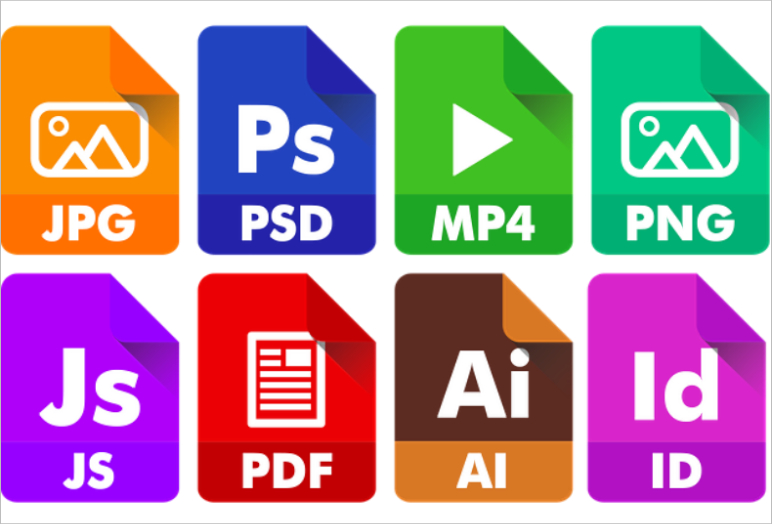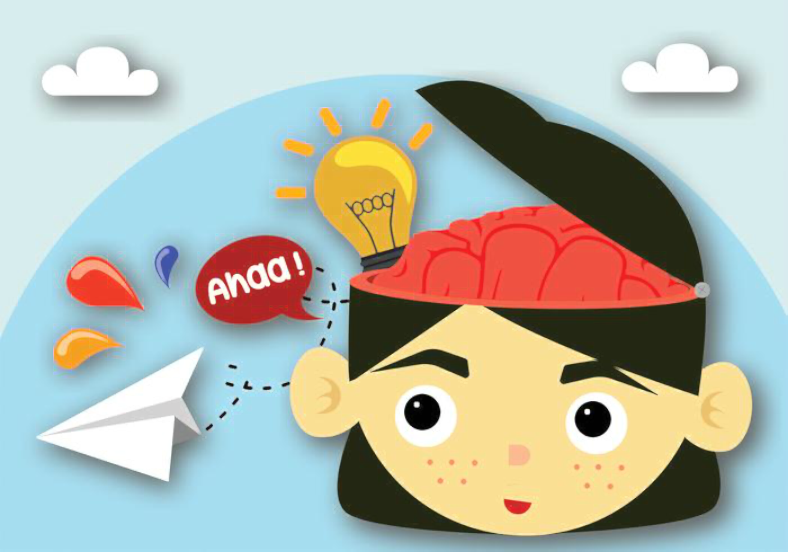Ever since we were little, when we just learned how to hold a pencil and found out its amazing ability to leave a mark on whatever surface we rub them into, we already discovered the wonderful world of art and how to create illustrations by doodling. Through this discovery, we were also able to recognize our own abilities to express ourselves through illustrations.
Even at a young and immature age, people already know how to be expressive and imaginative to some extent, and do it through art, regardless of how the illustration looks or how easy they are to interpret. The bottom line with illustrations is that they exist not only to provide a beautifying aura to a place or to extract emotions from its audience, but also for artists to express everything that’s going on in their minds and hearts, and they are allowed to do this without any reservations. You may also see Flat Illustrations.
For the most common traditional art forms, these include drawings (or sketches for drawings without colors), paintings, pottery, sculptures, photography, and even poetry. For the first two forms, these can also be collectively referred to as illustrations or illustration designs. Traditional illustrations are those that were being created by hand and with the use of a much more conventional method. And then there’s the more modern forms of art that are quite similar to the traditional ones but are being illustrated digitally. You may also like Brand Illustrations.
What Is the Definition of Illustration?
By definition, illustration refers to the visual expression or explanation of an idea, a decoration to help beautify something to make it more appealing, or an image for making something easy to interpret. Illustrations are commonly found on published materials such as books, magazines, newspapers, animated shows, films, and even video games. Illustrations can also be found on marketing tools which include flyer designs, poster designs, and banners.
The word illustration originated from a late Middle English term that is somehow related to the words illumination and intellectual enlightenment. Also, the origin of the word traces back to the Old French language which, in turn, has its roots from the Latin term illustra’tio or illu’stro, which means enlighten or irradiate.
What Is the Purpose of Illustrations?
With regards to the purpose of illustrations, we can often associate that with the phrase that most of us have probably heard of, and that phrase tells us that “a picture paints a thousand words.” While words are already enough for conveying information and also to allow audiences to explore their creative imaginations, illustrations serve to help these audiences to become more immersed and to keep their attention drawn into the material.
For children, illustrations are the main features that help draw their attention, especially those that contain cute images and vibrant colors. Illustrations are what they look forward to in a material, and this—along with the supervision from a parent—can help children to learn and understand more about the world. These illustrations can make children understand that to expect from the things that they come across in their daily lives.
Illustrations are really important since it serves as the magnet that is able to attract children to really immerse themselves to the context of the story, and to grasp it well. These illustrations on children’s books serve the same purpose as when a story is being told through a radio, that while it is already enough for conveying the scenes in a story, having actual animated illustrations on-screen can further immerse children to the story.
But graphic illustrations also exist in reading materials intended for adult audiences, and these materials are referred to as comic books, or graphic novels. As I said earlier, a book that is entirely made up of just words is already enough for the stimulation of creativity, but there is absolutely no denying that illustrations can help in making these books more interesting. You may also see Illustrator Brochures
What Are the Types of Illustrations?

Now that we finally got that over our head, let us talk about other matters concerning illustrations, and it is probably best to start with the different types of illustrations. With regards to this, there may be over a hundred or even a thousand types, but the most common ones include the following:
- Literal Illustration. This type of illustration represents a realistic image and often depicts a believable scene.
- Conceptual Illustration. A type of illustration that realistic elements that may have individual meanings, but when taken as a whole, it will also have a meaning that is entirely different. If the literal illustration type is considered as the non-fiction category of literature, the conceptual illustration type is the opposite and is being considered as the fiction category. You may also see Fashion Vector Illustrations.
- Historical Illustration. Also referred to as cultural illustration, this type of illustration are usually in the form of paintings and commonly depict either a landscape scenery or a portrait of a person. This type of illustration already existed way back before the invention of the camera and was the only method of documenting a person or an event.
- Hyperrealistic Illustration. From the name itself, they portray an image containing the most precise details, which makes the entirety of it more than just realistic. This type of illustration has the intention of making themselves look like an actual still photograph.
- Abstract Illustration. Judging by the way this type of illustration is called, you can already determine what to expect from this. The word abstract is being defined as an existence in thought but not having a concrete existence. In art, the concept of abstraction takes ideas outside reality and simply portray only a figment of the artist’s imagination. With abstract illustrations, one person’s interpretation may be different from another, and both of their interpretations may not even be remotely close to what the artist is actually trying to convey. You may also see Book Vector Illustrations.
Tools Used for Digital Illustrations
In addition to those standard types of illustrations that have been in existence for quite a long time already, there are two types of illustrations that make use of digital tools. This, as the name suggests, makes use of computers or tablets for the creation of these illustrations. These two types are as follows:
- Bitmapped Applications. Otherwise known as raster applications or painting programs, these are tools used for creating illustrations that contain rows and columns of pixels that are predetermined. Even though these pixel blocks are fixed, you are allowed to create them in individual layers to be able to easily make alterations to an illustration. Bitmap or raster illustrations contain several information for a single pixel, and this information include the pixel’s color, brightness, and saturation. You may also Like New Illustration Tools in 2017
- Vector Applications. More commonly called drawing programs, these are tools for creating images or illustrations that consist of mathematical formulas rather than pixel blocks. These creations are called vector illustrations and will be discussed further below. For vector-based tools, they allow artists to make alterations by simply clicking and dragging elements to move them to a different spot, or to change their scale. Though inexperienced artists may have the initial impression that vector applications are complex, but they are actually much easier to use for creating and modifying illustrations. The most common tools that are used for editing vector illustrations include Adobe Illustrator, CorelDRAW, Inkscape, Gravit Designer, and Affinity Designer.
If you think your tools are outdated and you want an upgrade, you may want to check out our list of some of the newest illustration tools that were made available in 2017.
What Are Vector Illustrations?

To make things as easy to comprehend as possible, vector illustrations are those digitally created images that were made using vector graphics. If graphic artists are looking for illustration designs that they can easily manipulate, while also being assured that they may be able to come up with an astoundingly high-quality illustration after all the alterations have been made, then working with vector illustrations is their best choice. You may also see Christmas Illustration Designs.
As we have already known, designs that were made with vector graphics are the most preferred ones by graphic artists, since they are the easiest to work with. This is because, with vector graphics, they can freely make changes on a design by simply clicking and dragging. But then again, graphic artists can only enjoy this freedom if they have the appropriate editing tools such as the ones mentioned earlier. You may also like Best Illustrations.
To discuss further on why designs in the vector format have become the top choice for many graphic artists, it is because each element on a vector-based design are separate from all the others, as opposed to the multiple layers used for bitmapped designs. And since each vector element is individualized, graphic artists are able to make changes only to specific parts of the design, without having to alter the entirety of it. Take this, for example, a downloaded design template may already capture most of what an artist desires, except for a few features that need to be moved, resized, or removed. Then without having to modify the design as a whole, they can make alterations to only those features. You may also see Abstract Illustration Designs.
Another reason behind this preference is the vector graphics’ ability to retain its sharpness and excellent quality even after being resized. As mentioned earlier, vectors consist of mathematical equations and not fixed pixel blocks, since the latter tend to stretch out and become blurry once they are enlarged. Vectors, on the other hand, are capable of adapting to changes in size which allow them to keep their resolution at best. You may also see Graphical and Illustrative Designs of Beer Labels
Related Posts
The Best New Portfolio sites, March 2023
Best Poster Designs 2023: Ideas and Tips
Hit and Miss of Olympic Logo Designs from 1924 till 2023
10 Iconic Moments Photographed in 2023 Rio Olympics
Top 5 Logo Design Trends of 2023
2023 Packaging Design Pentaward Winners
Digital Design Trends for 2023
Best Travel Apps for 2023
9 Script Fonts for 2023
10 Best Free Fonts for 2023
10 Best Mobile Games of 2023
Logo Design Strategies for 2023
Top 9 Web Design Trends for 2023
10 Most Popular Graphic Design Trends of 2023
Visual Design Trends to Look Out in 2023



